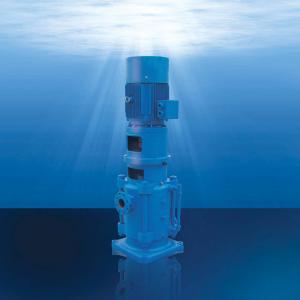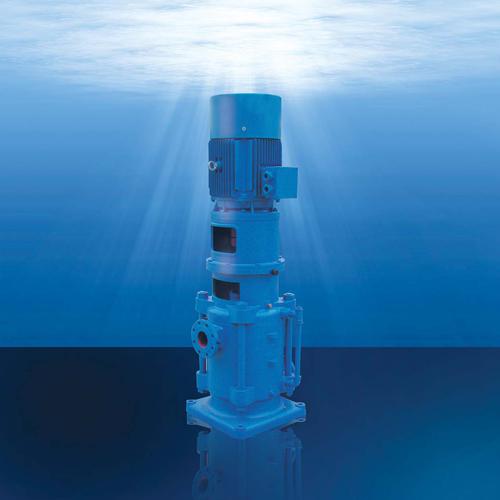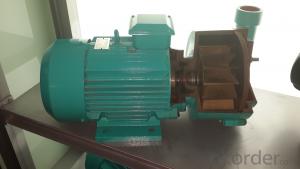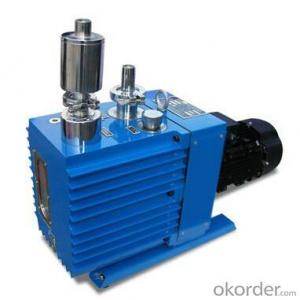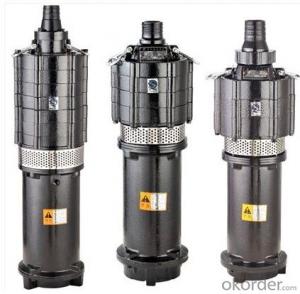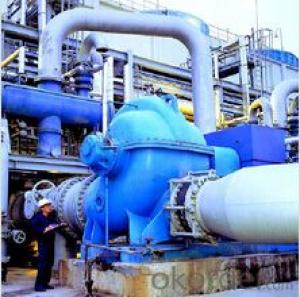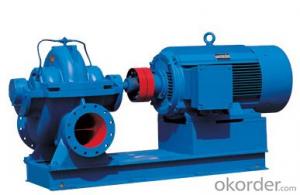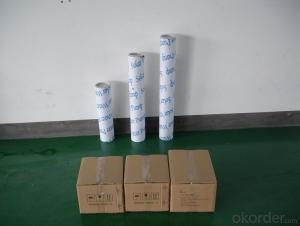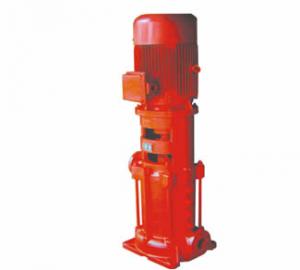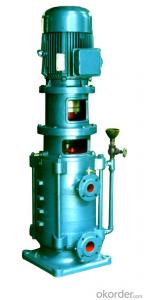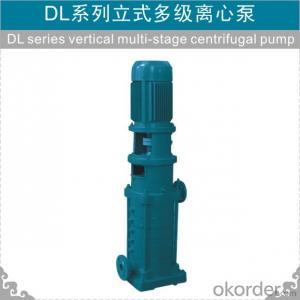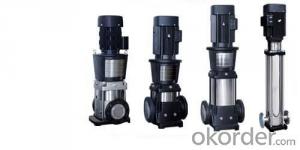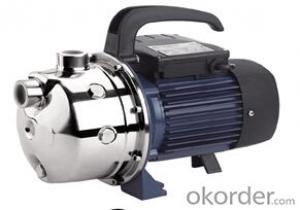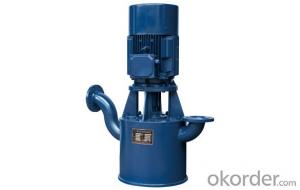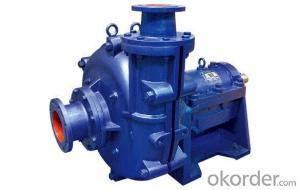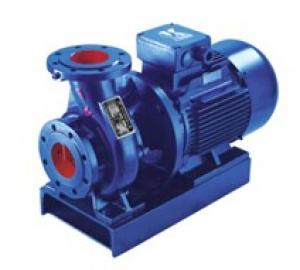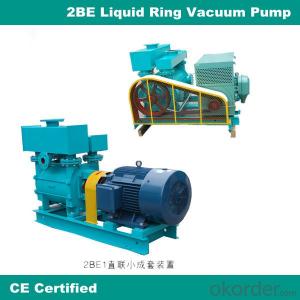DL series vertical multi-stage sectional centrifugal pump
- Loading Port:
- Shanghai
- Payment Terms:
- TT OR LC
- Min Order Qty:
- -
- Supply Capability:
- 1000 unit/month
OKorder Service Pledge
OKorder Financial Service
You Might Also Like
Product outline
1.DL series pumps are vertical, single suction, multistage,sectional and centrifugal ones and used for transporting pure water and the liquids below 85 C and with the physical and chemical natures similar to water's.
2.Vertically mounted, of a compact structure, low noise, small occupied land etc, features and mainly used for the water supply and the centralized heat supply system in cities.
3.The technical standard executed for this series pumps is:
JB/TQ809-89(Vertical multistage pump model and basic parameters),GB5659-85(Technical conditions for multistage centrifugal pumps).
4.Rotating direction of pump:CCW as viewed downward from the motor.
Pump structure
1.Model DL pump is vertically type,its suction port is located on the inlet section(lower part of pump), discharge port on the output section(upper part of pump), both are horizontally
positioned. The number of stages can be increased or decreased per the required head.There are four installation angles of 0°,90° ,180° and 270° available for selecting per different installations and uses in order to adjust the mo unting position of the discharge port (installation angle is 180° if no special note is given).
2. Major parts of the pump: inlet, middle and outlet sections,impeller, guide vane, guide vane on outlet bearing,shaft sleeve, balance drum and sleeve, conn. stand etc.
2.1 The inlet, middle and outlet sections, guide vane, guide vane on outlet section are all made of castiron and mutually form the working room of the pump.
2.2 The impeller is made of cast-iron, Liquids go in from one side along with the shaft and an axial force may exist because unequal pressures on both front and back of the impeller.Most of the force is made balanced by the balance drum while its residual is supported by the ball bearing on the upper end of the shaft.
2.3 The shaft is made of qualified carbon steel and in its middle the impeller, balance drum and shaft sleeve are mounted,which are fixed with pins and shaft sleeve nuts on the shaft to form the rotor. On one end of the shaft a lower shaft sleeve is mounted, which is fitted with the plastic bearing, and on the other the ball bearing is mounted to support the rotor and on the top of it a clutch is mounted and directly connected to the motor.
2.4 Both balance drum and sleeve form the balance device of the pump and can be replaced when worn out.
2.5 The shaft seal can not only use soft filling but also be changed with mechanical seal, when using soft filling, the shaft sleeve can be replaced when worn out and, when as the mechanical seal, the pressure water inside of the balance room is used for lubrication and cooling.
When as the filling seal, the 3/8'' flexible union on the outlet section is used through the flexible pipe to drain the water leaked from the filling body to the underground ditch to keep the place around the pump clean.
2.6 The bearing on the upper end of the pump uses molybdenum disulfide grease for lubrication
- Q: Must the water pump in the tank be all soaked in water?
- Need a submersible pump in the water, but it is not entirely like this, I have to work for a long time no problem in water, but there is a problem you should pay attention to the water pump, at least in half, or stop when the smoke is not on water.
- Q: 5 floor water pressure is too low, what kind of water pump is better?
- The location of the pump is too far away from the pumping pool, the suction of the pump is not enough, cavitation phenomenon, pumping water, this water pump manufacturers, the pump will be placed in a reasonable position
- Q: The distance from the pump button to the ground
- Yellow warning pop-up, indicating that the fire control room has issued alarm information, fire alarm controller (commonly known as the alarm host)
- Q: How to distinguish the flow and displacement in the hydraulic pump? What's the difference between the two?
- If you're allowed to spend a minute, you can do it 20 times a minute, and that is, the amount of water you sprinkle at a time (1000) is *20.1000 (ML) *20=20000 ml =20 liters, this is the flow,Here is a formula for you to see,Pump displacement * pump speed = flow,
- Q: Why should I pump the pump before starting the centrifugal pump?
- Only centrifugal water can be pumped out of the centrifugal blade to generate negative energy at the entrance. There is no water diversion. Only the negative pressure produced by the air is too low to absorb the well water.Water pump has been pumped, centrifugal pump or can not start normally, mostly because of the water pipes and air
- Q: How many square cables does the submersible pump for 7.5KW need?
- I=P/ (1.732Ucos phi) =7.5/ (1.732X0.38X0.85) =13A (calculated according to three-phase city power, power factor 0.85).
- Q: Why can't the centrifugal pump pump the vacuum?
- Condition:The pump shell must be filled with liquid under certain installation height and running without leakage.What is the phenomenon of centrifugal pump? What harm does it have? How to eliminate?)
- Q: Do you have a suction pump higher than 9 meters?
- Since the atmospheric pressure has been basically determined, the theoretical suction degree of the pump is more than 10 meters.
- Q: Significance of water pump model ISO50-160
- Meaning of water pump model ISO50-160: ISO- stands for international standard code (IS). 50- indicates that the inlet diameter of the pump is 50 mm (the complete model IS50-32-160 32- indicates that the outlet diameter of the pump is 32 mm). 160- represents impeller diameter.
- Q: Why adjust the centrifugal pump outlet valve can adjust the flow? What are the advantages and disadvantages of this method? Is there any other way to regulate the flow of the pump?
- This method can be used to regulate flow. The advantage is that it is simple and easy to use and the disadvantage is that the throttle consumes energy
Send your message to us
DL series vertical multi-stage sectional centrifugal pump
- Loading Port:
- Shanghai
- Payment Terms:
- TT OR LC
- Min Order Qty:
- -
- Supply Capability:
- 1000 unit/month
OKorder Service Pledge
OKorder Financial Service
Similar products
Hot products
Hot Searches
Related keywords
